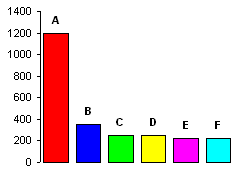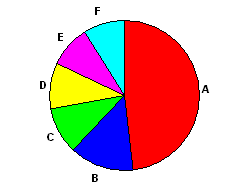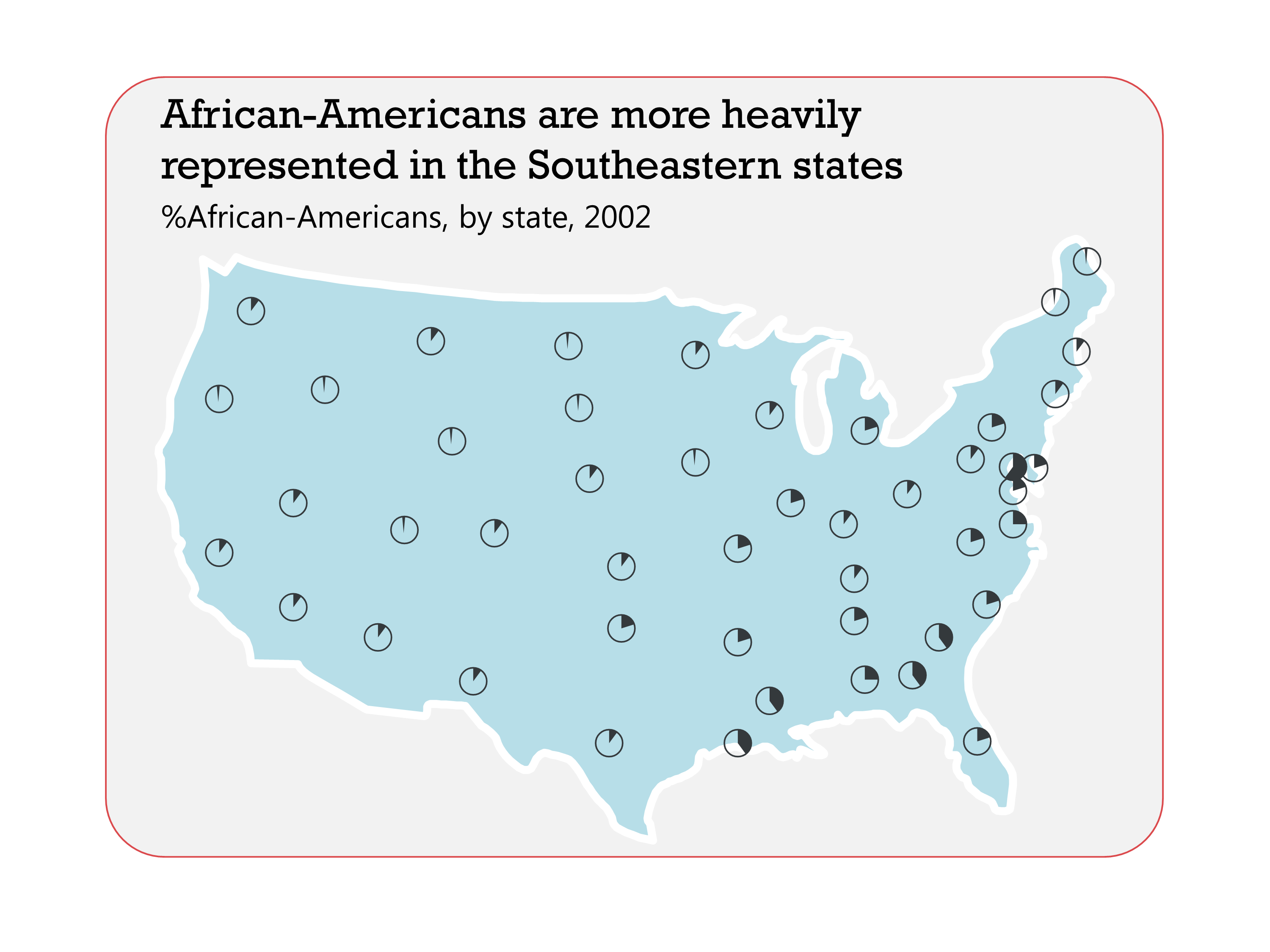Blue Color Like Pie Chart in the World

"The pie chart is easily the worst way to convey information ever developed in the history of data visualization."
Walt Hickey
Walt Hickey certainly didn't mince words in his 2013 blog, The Worst Chart In The World, in which he explained why everybody should stop using pie charts as soon as possible and compared them to DC's oft-mocked fish whisperer.
And Edward Tufte famously said back in 1983, "The only thing worse than a pie chart is several of them," while Stephen Few said in 2007, "Save the pies for dessert." Most statisticians seem to regard pie charts as a poor way of displaying information, and as such they are uncommon in scientific literature.
The thing is, it's 2021 and we're still using them. Far and wide, pies remain popular, and in fact, they're among the most used charts in Custom Charts for Jira.
So let's dive into the why behind the pie.
The reason pie charts are frowned on
Pie charts are frowned on because they're so often screwed up by the maker, or were the wrong type of chart to use in the first place.
For example, if you've got lots of data points to display, you really ought to steer clear of pie charts. However, many don't, and create hideous messes like this:

Really, you don't want more than five slices in your pie. Even better, three. If you use too many skinny slices, you pie chart becomes hard if not impossible to read, clouding the information more than revealing it.
Also, if your data points are similar, then your slices will look a similar size. This makes your pie chart basically useless. Have a look at these.
Not very easy to see the biggest slices of these pies, is it? We humans aren't good at comparing different-sized segments of a circle. You'd need to look at figures on or next to the pie to understand what's going on, in which case you may as well be looking at the raw data.
However, we are much better at comparing the different lengths of a set of rectangles, which is why, in circumstances where your data points are similar, a bar chart is more appropriate.
And then there's 3D pie charts, which are sometimes used to deliberately deceive an audience. The slices that are closer to the viewer appear to be larger than those at the back, even when they're not. Have a look at the example below. Item C looks at least as large as Item A when in reality, it's less than half as large.


But just because they get abused, does that mean pie charts themselves are useless? No. Here's some reasons why.
Pies are prettier
Controversial statement approaching: bar charts are BORING. Pie charts are nicer to look at, because our visual cortex prefers round things to sharp corners, and research shows that our emotional reaction to them is more positive.
Some statisticians may balk at this reasoning because their mission is to present data truthfully and accurately. But great data storytellers have a different mission: to engage and motivate audiences with simplified messages. Logic and measurements aren't enough for that. Ninety percent of our decisions are based on feelings, not logic, which is why data storytellers make charts that appeal to their audience emotionally.
So, if you only have three or four data points to display, and those data points are different enough to render obviously different-sized pie slices, then a pie chart might be, visually, the better option.
Pie charts and, urm, Aquaman

Walt Hickey said that "pie charts are the Aquaman of data visualization", arguing that Aquaman is really only good at one thing and even then, other superheroes can often do his job better. Batman has a submarine and Superman can hold his breath underwater. And, Hickey said, "if there's a sinking oil tanker, who do you really want to call? Aquaman? Or Superman?"
The thing is, despite his weaknesses, Aquaman has one advantage over Superman that Hickey's forgotten. Access to magical weaponry. And Superman has no defense against magic or magical weapons. It's said that Aquaman's Trident of Atlan could cut Superman's skin.
And likewise, there's one thing that pie charts are actually better at representing visually than bar charts: parts in relation to a whole.
Take a look at the following bar chart. Is it immediately obvious what fraction of the whole is represented by A? Nope.

But now look at the pie chart version. Because the circle is the natural design element that best represents 'the whole', it's immediately obvious that A is about half of the total.

By the same token, it's easier to estimate percentages with a pie chart than with a bar chart. It's because not only does the circle represent the whole, i.e. 100%, it also has an invisible scale with 25%, 50%, and 75% built in at three points around the circle. Here's a good example of even the tiniest pie charts giving a clearer picture of the percentage amounts.

Bruce Gabrielle, in a fierce defense of the pie chart, said:
"[Edward] Tufte is wrong to make an assertion about pie charts based on his own context (the analysis and presentation of complex data) and use broad strokes to apply that to domains where he has no expertise (presenting and selling ideas in the boardroom)."
Basically, pie charts, just like Aquaman, have their place. And in some, albeit narrow, circumstances, pies can kick bars' butts.
How to make your Jira pie charts more useful
In addition to only using three-to-five data points max, and making sure those data points are very different, and never even thinking of using a 3D pie chart under any circumstances, here are some additional tips that can make your pie charts more useful.
Use different enough colors
This is pretty easy if you stick to the no-more-than-five-slices rule. But people still do shit like this:

Alright, so it looks nice. Modern, stylish, streamlined. But useful? No chance. It's lucky each segment is labeled because if there was a color key, you'd have no hope of distinguishing them. The colors are too damn similar.
Use meaningful colors
If you're making a pie chart on, say, the statuses of your Jira issues, using the Jira status colors ("to do" = blue, "in progress" = yellow, "done" = green) on your dashboards makes the chart immediately meaningful without any additional explanation. Because you're staying consistent with how those statuses are represented elsewhere (like on the issues themselves or in your board reports), you don't have to re-learn what the colors represent.
Unfortunately, out-of-the-box Jira pie charts don't allow for customized coloring. The colors are randomly different every time you generate a pie chart in native Jira, and you have no control over them.
Being able to control chart colors is also useful if you're tracking custom metrics like project health using RAG (red, amber, and green) coloring. It's bloody awkward having to explain to the audience that green means red, purple means amber, and yellow means green, and worse still having to redecode the new randomized colors every week.
So if you want to customize the colors of your Jira pie charts and have proper status and RAG colors, you'll need an add-on like Custom Charts for Jira.
Eat the middle!
Try eating the middle of your pies and leaving them as donuts. Donut charts slightly alleviate that problem we have with angles and proportions, by focusing our attention more on the length of the arcs. The length still isn't as clear as a line of bars next to each other, but it's better. Also, donut charts are more space-efficient. The hole cut out of the middle can be used to display information.

In native Jira, there are normal pie charts and donut charts. In native Confluence, there's only normal pie charts. It means that to get donuts in Confluence, you'd need an add-on, like Custom Jira Charts for Confluence. With both of our Custom Charts apps, we decided to go for donuts only, simply because they're better.

To sum up
Pies aren't just for dessert, Mr Few. Keep pie charts in your bag of tools and pull them out when:
- You want to appeal to your audience's emotions
- You want to communicate a part-to-whole relationship quickly
- You want to display values around 25%, 50%, and 75%
- You want to trigger a productive discussion with an at-a-glance visual rather than an exact set of values
- You want to make funny/clever charts for office shits and giggles like this one:


Christopher is a self-confessed nerd who'd probably take the cake on Mastermind if Star Trek: Voyager was his specialist subject. He writes fiction about time travel, conspiracies and aliens; loves roller coasters, hiking and Christmas; and hates carpet, rom-coms and anything with chilli in it. He's written extensively for technology companies and Atlassian partners and specializes in translating complicated technical concepts, specs and jargon into readable, benefits-driven copy that casual readers will understand.
kolodziejhomplaine.blogspot.com
Source: https://www.oldstreetsolutions.com/pie-charts-aquaman
0 Response to "Blue Color Like Pie Chart in the World"
Post a Comment